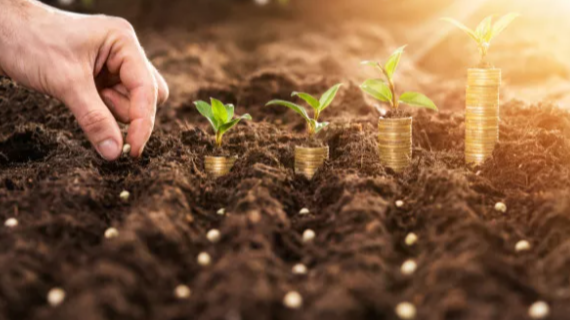Soil IoT Condition Monitoring - Not Just Machines
Over the past century or so, there has been a phenomenal increase in crop production worldwide. In Britain alone, annual production of wheat, barley and oats may be 400% of what it was in the early 20th century.
A number of different factors are at play in this dramatic increase in yields, from increasingly high-tech farming equipment to carefully selected and improved crop varieties to smarter pest control and fertilization. Better weather forecasts also played a role. But all of these factors ultimately boil down to a better understanding of what it takes to improve crop yields, and the ability to translate that understanding into tangible agricultural practices. In other words, data-driven decisions. адаптер rs232 к ethernet
And now, the advent of the Internet of Things is ushering in a whole new era of agricultural decision-making. Agricultural applications of IoT include systems to monitor crop health during the growing season (and any weeds simultaneously), water management solutions, and even location tracking of livestock.
Smart soil condition monitoring is one such application—and a multipurpose one at that. By deploying a network of soil sensors throughout the agricultural environment, farmers can measure a range of different factors that can help them grow crops more efficiently. These factors include:
Soil Composition: Even the most non-farming among us may be aware that certain soils grow certain crops better than others due to factors such as their acidity, drainage and the nutrients they contain . Connected sensors can not only measure soil composition before deciding which crops to plant, but also monitor soil composition throughout the year. This helps farmers decide on crop rotations or additional nutrients to add to crops.
Soil temperature: Temperature plays a vital role in promoting seed germination and healthy root growth. Soil temperature then remains an important factor affecting nitrogen growth, respiration, decomposition and mineralization throughout the crop life cycle. In turn, understanding these parameters can help farmers make more informed decisions, for example, about fertilizer and growing food. While soil temperature can be estimated with ground sensors, underground probes are more accurate. TCP-шлюз modbus
Soil Moisture/Moisture Level: It's obvious that crops need water to grow - not too much, not too little. Measuring the water content in the soil is a much more accurate way of assessing the moisture content of your crops, rather than relying on observations of the weather or even the crops themselves. If the sensor is also connected to an automatic irrigation system, it can be programmed to water crops precisely when and how they are needed.
Collectively, all of this data helps farmers and agribusinesses take a more proactive and informed approach to managing their crops. Not only can this insight help maximize crop yields, but it can also help optimize farming environments and maintain soil quality over the long term. In fact, this high-tech IoT solution can actually help human agriculture live in harmony with the natural world.

 Over the past century or so, there has been a phenomenal increase in crop production worldwide. In Britain alone, annual production of wheat, barley and oats may be 400% of what it was in the early 20th century.
Over the past century or so, there has been a phenomenal increase in crop production worldwide. In Britain alone, annual production of wheat, barley and oats may be 400% of what it was in the early 20th century.

 浙公网安备 33010602011771号
浙公网安备 33010602011771号